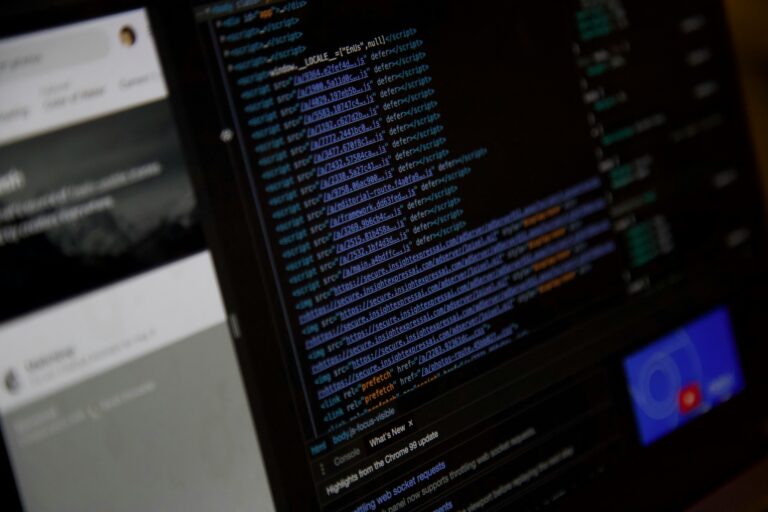Calls to establish a National Center for Advanced Development in Education (NCADE) are resounding, with momentum building around the recent introduction of the New Essential Education Discoveries (NEED) Act in the U.S. House of Representatives on Dec. 11, 2023. This bipartisan legislation has received over 60 endorsements spanning the political spectrum. Amidst this push toward bolder investments in advanced education research and development (R&D), the Institute of Education Sciences’ (IES) National Center for Education Research (NCER) has launched a new initiative, Accelerate, Transform, and Scale (ATS). IES created this initiative in response to Congress’ directive to “use a portion of its fiscal year 2023 appropriation to support a new funding opportunity for quick turnaround, high-reward scalable solutions intended to significantly improve outcomes for students.”
ATS is widely viewed as a pilot version of what could one day become an Advanced Research Project Agency (ARPA) for education. It should be promoting the informed-risk, high-reward approach to R&D that NCADE could bring to the Department of Education. Modeled after the Defense Advanced Research Projects Agency (DARPA), ARPA models are known for reaching toward moonshot goals, undertaking “imagine if…” projects, fostering multidisciplinary collaboration, and serving as a bridge between government-funded basic research and the profit-driven marketplace.
Last fall, as part of the ATS initiative, IES released a Request for Information (RFI) asking for public feedback on a proposed new program called “From Seedlings to Scale” (S2S). The RFI drew more than 60 comments from a number of voices across the education ecosystem, including the Alliance for Learning Innovation (ALI) and many of its members, as well as other organizations such as Mathematica, SRI International, the Learning Policy Institute, and KnowledgeWorks.
As we await a more concrete announcement crystallizing S2S, we can look to these public comments for a sense of what education stakeholders hope to see in a pilot ARPA program and understand characteristics most likely to drive advanced education R&D.
A number of organizations highlight AI as a critical focus area that is especially ripe for R&D. Some suggest that this area even be broadened given the significant impact AI tools could enable across a number of areas of education innovation
Celebrating Key Steps Toward Bolder Education Research
Comments reflect a sense of excitement around this informed-risk, high-reward program that promises to bring groundbreaking improvements to teaching and learning. Reviewers acknowledge that the landscape of education R&D has long gone under-resourced and celebrate the introduction of ATS as a “catalyzing moment for the emerging sector of education R&D” (AERDF). In particular, organizations highlight S2S’s potential to encourage breakthrough innovation and experimentation, drive evidence- and outcomes-focused R&D in education, and broaden participation in R&D by dismantling traditional barriers to capital.
According to the RFI, S2S is likely to be framed around four focus areas: (1) approaches to building learners’ skills and competencies for jobs of the future; (2) tools and systems to support neurodiverse learners; (3) next-generation tools that leverage artificial intelligence (AI) to support teaching; and (4) new approaches to support students’ social emotional health. Reviewers generally affirm the value of these focus areas, with some suggesting these be expanded to cover a range of areas such as adult basic education, out-of-school time, family engagement, extracurricular experiences, and civic engagement.
A number of organizations highlight AI as a critical focus area that is especially ripe for R&D. Some suggest that this area even be broadened given the significant impact AI tools could enable across a number of areas of education innovation, like its potential to yield rich data on teaching and learning, support learning accessibility, enhance learning assessment, create immersive experiences, reduce preparation time for educators, and enable personalized instruction.
As for additional recommendations for building a strong program capable of fueling breakthrough innovations, these are some of the main takeaways:
IES needs to prioritize implementation feasibility and outcomes
Common Group shares that “implementation remains the biggest challenge for scalable innovation in education,” and others agree. As New Classrooms explains, “implementation is also a crucial part of the equation to ensure that the product will actually serve students in a real-life setting.” The LEARN Coalition, too, notes that across the U.S., “numerous innovative programs and products have become irrelevant to the classroom due to poorly planned implementation processes.” Responses call on IES to prioritize evidence-based and outcomes-focused proposals with strong frameworks for data collection, clear theories of change, attention to solution feasibility and end-user needs, and scaling potential.
Solutions should be created with the experiences of diverse end users in mind. Many respondents urge IES to build more explicit language around equity and diversity into the final program design.
All R&D processes should ensure inclusive community participation and end-user engagement
To ensure implementation feasibility, innovators need to bring communities into the fold of R&D work. The majority of public contributors emphasize that this means end users, such as students, educators, school administrators, and parents, should play key roles throughout the R&D process. According to AERDF, community inclusion “means building a space together, rather than inviting collaborators to a space separately created.” Comments stress the value of community members as active partners, from the initial stages of problem definition and through continuous cycles of feedback.
Centering community needs also means that solutions should be created with the experiences of diverse end users in mind. Many respondents urge IES to build more explicit language around equity and diversity into the final program design. More specifically, contributors suggest that IES (1) give priority to solutions tackling educational inequities and (2) require that all proposals are scalable to diverse communities, particularly under-resourced schools more likely to face barriers implementing new technology.
Both research teams and any working group established to help guide S2S grantees should feature interdisciplinary expertise
Respondents agree that grantee teams and the IES working group should include a variety of sectors and diverse sources of expertise. According to the comments, there should be representation from education agencies, industry, education, and social science researchers, relevant content-matter experts, community representatives, and edtech experts.
ARPA models are successful because they prioritize evidence-informed and outcomes-driven R&D with clear articulations of problems. They leverage interdisciplinary collaboration to invest in ambitious “moonshot” goals and elevate the engagement of end users.
S2S should build in technical support and capacity-building for participating teams
Respondents stress that IES should provide active strategic support and capacity-building throughout the R&D process. They suggest that teams will likely need help navigating federal and state guidelines around security and data privacy; accessing private sector networks for consultation around scaling; cultivating community engagement; convening and coordinating collaborative partnerships; securing technical support for design and prototyping; and managing approvals for access to student data and pilot testing. Some also explain that this more active and involved management style is at the heart of an ARPA’s ability to surface innovative solutions. According to Luminary Labs, “most successful ARPA-driven projects not only spark innovative ideas but shepherd them through the translation to practice and market.”
A number of responses encourage IES to consider the flexibility projects may need to develop breakthrough solutions, particularly when it comes to evaluation.
The program should adopt a more flexible approach that encourages informed-risk experimentation and allows teams to learn from failure
While comments emphasize the importance of projects developing a strong evidence base, a number of responses encourage IES to consider the flexibility projects may need to develop breakthrough solutions, particularly when it comes to evaluation. For example, WestEd notes that randomized controlled trials (RCTs) may not align with S2S’s ARPA-inspired approach because they are time-consuming and leave little room for developers to build new features into a product for further testing.
The kind of iterative experimentation S2S calls for also raises questions about how the program will handle and frame failure. Several contributors say that S2S should be structured such that it “understand[s] the anatomy of risk, failure and learning to help unlock education R&D as an engine of innovation” (AERDF). LeanLab describes ARPA-style research as a “non-linear” journey that involves iterative usability and feasibility testing, and SRI International describes failure as an essential part of the process of understanding challenges within the education system.
Given the extensive cycles of trial and error respondents anticipate, many are concerned that the one-year time frame currently in place for Phase 1 will not be sufficient for teams to build critical partnership frameworks and collect strong data. According to the LEARN Coalition, “a one-year timeframe imposes limitations on grantees, hindering their ability to take calculated risks and conduct thorough developments.”
What This Tells Us About the Markers of Successful ARPA Models
While not all of the comments explicitly frame their recommendations as ARPA-related, we must recognize in these points many of the distinct qualities that make ARPA models such powerful vehicles of innovation.
ARPA models are successful because they prioritize evidence-informed and outcomes-driven R&D with clear articulations of problems. They leverage interdisciplinary collaboration to invest in ambitious “moonshot” goals and elevate the engagement of end users. They embrace risk and failure in the spirit of creating a flexible environment that can foster accelerated advancements toward groundbreaking innovation. Program managers engage actively with grantees to support teams in making adjustments and maximizing outcomes.
Many of these elements are alluded to in public comments to the RFI, and these parallels show us that the ecosystem is eager to welcome a high-reaching approach to education innovation.
We should note that much of the bolder language typically associated with ARPA models was not evident across all responses, signaling perhaps that we need to create more opportunities for dialogue around the distinctiveness of the ARPA model. Still, these public responses reflect a collective eagerness within the education ecosystem to collaborate and propel the vision of S2S toward a promising future.





1 thought on “ARPA Education Pilot: Unpacking Public Reflections”
DARPA has been successful by addressing specific technical problems that can be solved using science and engineering.
So much of education is policy related (an area that DARPA famously avoids). It’s not going to be improved by technology alone, and the remainder isn’t subject to the DARPA special sauce.
Finally, the need for ‘diverse’ solutions for diverse constituencies again runs against the grain of the DARPA model, which specifies a defined customer.
I feel this effort is destined to fail hard for absolutely predictable reasons.